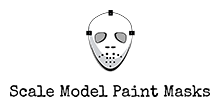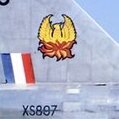Everything posted by Mozart
-
P-51D-5NA, 339th FG, Fowlmere FINISHED
And you’re using the tools and techniques exactly right Mike, adapting what is easily available then personalising it. It’s great to see you discovering how to do this then explaining it all here.
-
P-51D-5NA, 339th FG, Fowlmere FINISHED
Excellent stuff Mike! Chequers are a real challenge, both drawing accurately on other than a dead flat surface, and applying. Good luck, looking forward to seeing more both here and on LSP. It’s inevitable that the smallest markings will have to be decals, I’m reluctantly using a few on my Fury that are impossible to make masks for. Max
-
Hawker Fury I
OK, so time to bite the bullet....the main panel! I reckoned the exhausts were likely to be the most troublesome area so I took a lot of pains to measure and draw as accurately as I could, first attempts at the panel cut-outs weren't satisfactory because they're not ellipses: so using the curved line tool I re-did one carefully then copied: much better! The lower curved line was going to be tricky too so I took datums (data?) from the centre of each exhaust stack: Clearly the photograph I took as my reference couldn't make allowance for curves in two dimensions, so this was all a bit wet finger in the air as a first trial. The cut was clean: and fitting the foil unexpectedly easy, though it's definitely a two "free hands" job: but you can see that the lower curved edge needs further work. The foil once burnished down shows every flaw of the surface underneath so that's something I need to pay a little attention to, though it actually looks rougher in these pictures than in the flesh. I decided not to try to accommodate the inlet, that will have to be painted I'm afraid. The three vents are OK-ish....the resin moulding isn't that crisp and the foil accentuates it so I may try to smarten that area up too.....but all in all quite promising! Max
-
This site is awsome
Good to know Gazza! Persevere with your efforts with your wife's Silhouette, the rewards are well worth it. Max
-
Hawker Fury I
I did think about test panels Mathieu but decided to go for broke, nothing quite like the real thing: So firstly I measured the panel top line as accurately as I could, 35.5mm and did my usual dimension line onscreen then scaled the photograph to suit: Once that was established I drew the whole panel, copied it then flipped the copy to get the port panel: Next, the guess at the cutting settings: ....and those worked first time! Very happy with the results, giving some thought next to the main engine panel...🤓 Time the next exciting adventure....😁 Max
-
Hawker Fury I
No time for proper modelling today but I did manage a minute with camera and computer to do some prep for the nose panels. The plan is to import this picture into the Silhouette and cut each panel in Bare Metal foil as outlined above, no prizes for guessing which is going to be the most difficult! Going to start with a simple one to see how it cuts and adheres, might find five minutes tomorrow. 😁
- Hawker Fury I
-
Hawker Fury I
Thanks Mike, it's certainly very colourful! When to top wing is on it's a surprisingly heavy model.....all that resin and white metal adds up! Thanks Mike, it's a very enjoyable build and such a pretty aeroplane, I'm really tempted to get another spatted version.....but I need to do my Gauntlet first! 5 minutes later......you caught me in a moment of weakness Mike......I've ordered the spatted one too!
-
Hawker Fury I
On with the job! So here we are with the model substantially built and primed ready for paint. The upper wing is just resting in place: You can see clearly here that the undercarriage, interplant struts and cabane struts are white metal. The struts have a very solid and robust key into the upper wing. First application was trainer yellow: I later saw that the yellow needed to come further forward on the port side, so that was amended. The struts were also sprayed then masked along with the rest of the yellow ready for the Dark Earth background: I could have "free-handed" the camouflage but decided to make masks. One of my reference books had some useful scale drawings which I scanned as guides: ....and these were used as shown below: The vertical line drawn on the Silhouette to the dimension of the leading to trailing edge enabled me to get the right scale for the drawing by reducing or enlarging it as necessary, this technique is used on all the masks I produce. This was all very easy for the wings and empennage: And before too long: I considered doing Silhouette-produced masks for the over-fuselage camouflage but to be honest it was more fuss than it was worth, so some ordinary masking tape with a slightly wavy edge soon did the job. And when all the masking tape came off: Inevitably there are one or two small areas to touch up, but for a model that was so heavily masked I'm pleased with how little I need to correct. The final fuselage painting task is the nose panels. I'm going to firstly investigate using Bare Metal foil, cutting the panels with the Silhouette from a scanned image, but the default will be natural metal paint finish.
-
Hawker Fury I
A Start I'm building the AlleyCat (originally Montex) Hawker Fury, a resin and white metal kit in 1/32 scale: The full build is logged on the Large Scale Planes forum here so this will simply be the painting and masking stage. Choice of subject was difficult but in the end I decided on because it was colourful and very different to the normal silver finish seen on Furies of the interwar period. It presents quite a challenge when it comes to painting and masking, a combination of trainer yellow, Dark Earth and Dark Green camouflage and polished aluminium on the side nose panels. The transfers supplied with the kit cover this aeroplane, K8267 but of course I decided to design and cut my own masks for most of the markings: The transfers would be useful to scan, import into the Silhouette software and trace, similarly the colour scheme shown in the instructions gave me an idea of the camouflage pattern, though a little research caused some doubt in my mind about the scheme's accuracy: Is there really a rectangular background behind the "7", and is there a yellow background to the wing tips? It's always dangerous trying to interpret old black and white photos, especially this grainy, so I decided just to go with the scheme. Yellow wing tips here I think: Max
-
Work in Progress section
Thanks Kev for setting up the WiP section, you have been wise in using a broad brush approach regarding how much of the build people want to post with the ultimate aim of a greater understanding of how masks are produced and applied. 👏 Max
-
1:32 Meteor F4 Now Finished
Excellent Kev; I'm into the painting and masking stage of my Hawker Fury, I've been keeping a record of progress so will post it there when you've set things up.
-
1:32 Meteor F4 Now Finished
Agreed Kev. Any further thoughts about a WiP section for the site, or shall we do as Mike has done and put progress pics in the Gallery? Max
-
How to make decals with masks.
So to be clear, what you’re doing is putting the mask onto the decal film rather than onto the plastic, spraying through then when dry applying the decals in much the same way as usual? Max
-
Sound Off!
It's not easy Woody, but equally, it's not hard! All it takes is application and a willingness to learn a few straightforward techniques, and the "tutorials"and tips here are designed to help you through that. Then it's a matter of routine - sure I still make mistakes after using the Silhouette for 7 or 8 years but I try to learn from them. Have a look at Mike's Meteor in the Gallery, he's new to all this stuff and has produced exemplary work. The Silhouette software is not at all complicated, if you can use Adobe Illustrator it'll be a walk in the park for you. Have a go! 😁 Glad to see you've un-lurked by the way.....welcome to our growing happy band!! 🤪 Max
-
1:32 Meteor F4 Now Finished
You’re right Mike, removing the masking is one of the great delights providing things go well, but as you say, even if a correction is necessary it’s usually done in an instant. ,
-
1:32 Meteor F4 Now Finished
Right on the money Mike, she looks splendid…….and what a great “advert” for using masks. Looking forward to seeing the final masterpiece. Max
-
Sound Off!
It’s good to see another intro from a new member, glad you’ve already found it of some use Gary but if there’s anything specific just ask away…..no guarantees of answers but we’ll damn well try our best. Max
-
Hello from the Philippines
Good to see you here, you'll not regret venturing into your own mask making! I'd echo Kev's comment about preferring Silhouette to Cricut, though I hold my hands up and confess that I haven't used, nor seen a Cricut in operation......however....to my knowledge ALL of the tips and advice on this forum at least concern work with either the Silhouette Portrait or Cameo machines. That for me would be good enough reason to opt for Silhouette. Max
-
Work in Progress?
Sounds promising Kev 👍
-
Work in Progress?
Can’t argue with that at all Mike, you’ve put it very eloquently. However I can’t see the need for detailed cockpit builds for example, or undercarriage bays including pipe runs etc where in my experience masking isn’t usually applicable. Users of the forum need to be able to locate the aspects of a build for which they have joined the forum easily and not have to wade through page after page to find it. Max
-
Work in Progress?
From my own point of view Kev, I wouldn’t be interested in doing a full build log on this forum, that will be on LSP, but of course I realise that not all members here build in 1/32 scale nor belong to LSP. So for me, the two forums would be complementary because I’d cover the entire build on LSP, but the painting and mask-related in more detail here. For instance with the Fury, I’d be starting at the point I am now, show the scheme chosen, the design work on the Silhouette, masking and painting but not latterly rigging etc. I’m hoping to use Bare Metal foil for the front panels and will be trying to use the Silhouette for cutting those, so that’s about my limit here. A finished picture will go in the Gallery just to tie things up. Others’ thoughts will vary depending on their own circumstances so perhaps a degree of latitude could be allowed about how much is logged here? Max
-
Work in Progress?
I've just started preparations for the painting stage of my Hawker Fury I (1/32 scale AlleyCat resin and white metal) having finally decided on the scheme: It's quite a complicated scheme which will require a lot of masking at various stages, and because of this I had more or less decided to use the transfers supplied with the kit, shock horror!! 😱 But no, fear not dear friends, t'was not to be.....just couldn't do it. So I found myself yesterday happily seated in front of my computer scanning the markings, importing said scans into the Silhouette screen, tracing etc etc. An idle thought came into my head, wouldn't it be a good idea to have a WiP thread in the forum specifically related to the masking part of the build. It would demonstrate people's differing techniques and experiences and be a good teaching/learning resource, which in turn may encourage more footfall in the forum. Any thoughts mates....and Kev, El Supremo?
-
Portrait 3 Will Not Cut - Problem Solved
Well that’s great news Mike, another mystery solved! Who’d have thought it could be something so “simple” or straightforward, but it often is. So…..off you go discovering the wonderful world of producing your own masks! I really enjoy every stage from research to design to cutting and then applying. Kev, a trouble-shooting section would be really worthwhile. Smiles all round. 😁 😁
-
Portrait 3 Will Not Cut - Problem Solved
I’d be thinking that it’s defective and send it back whence it came, asking for a replacement. Max




